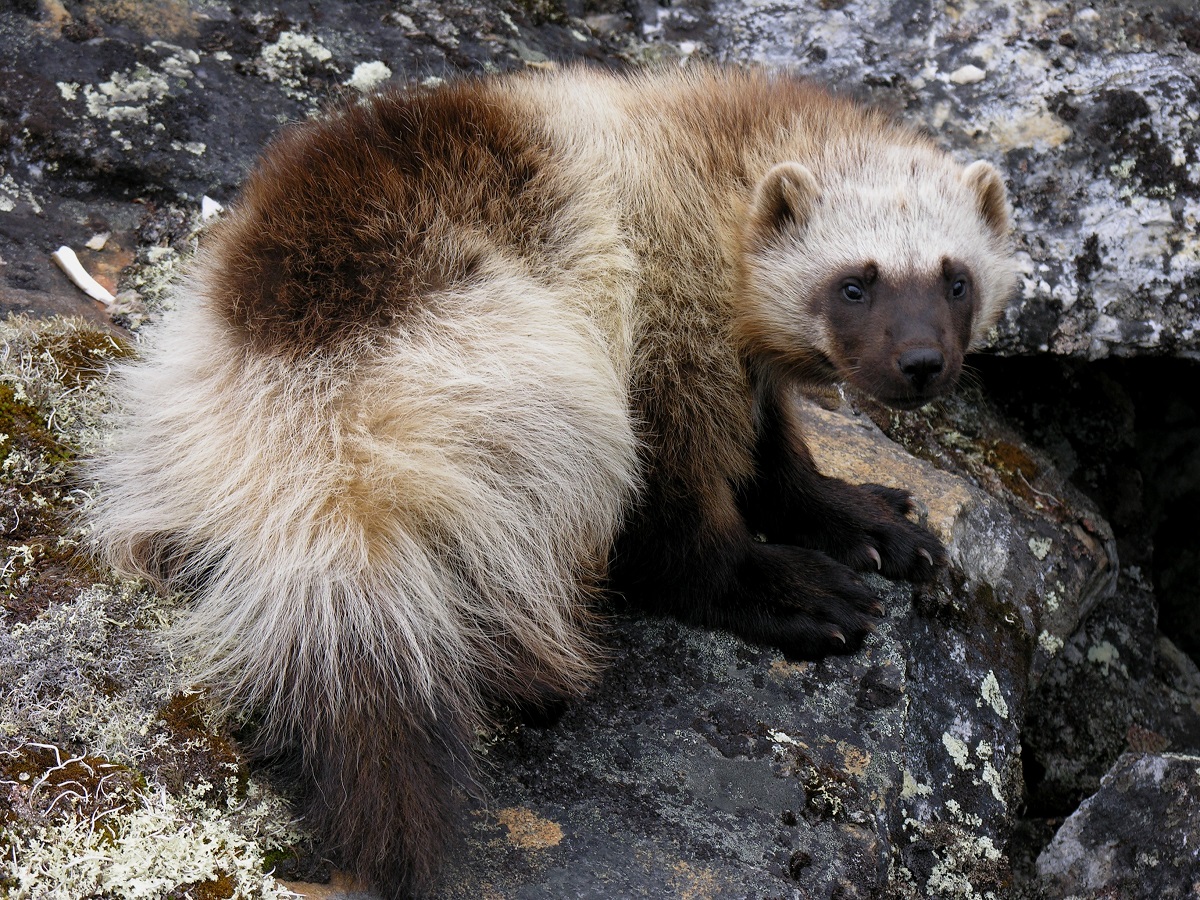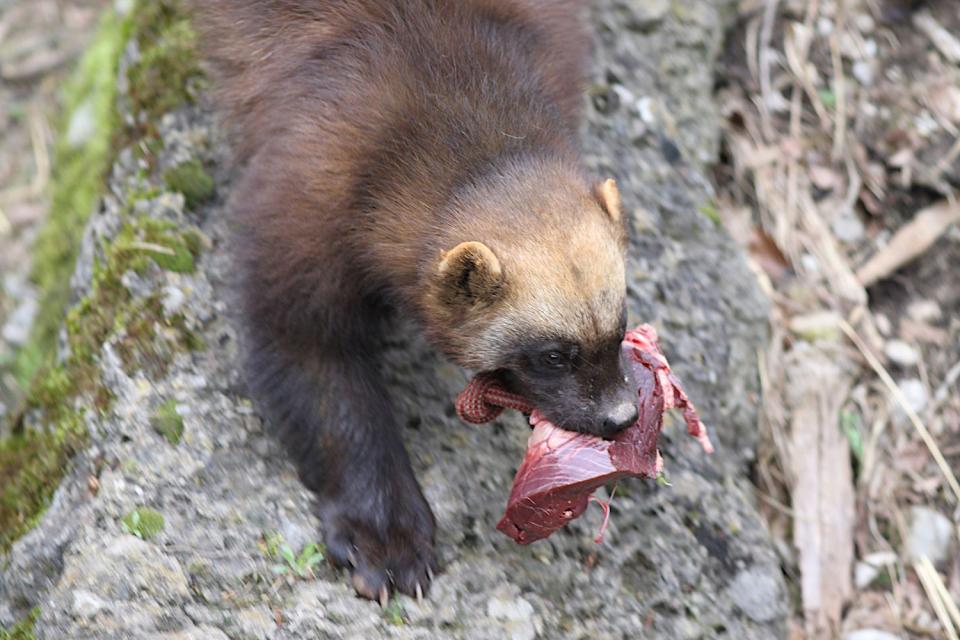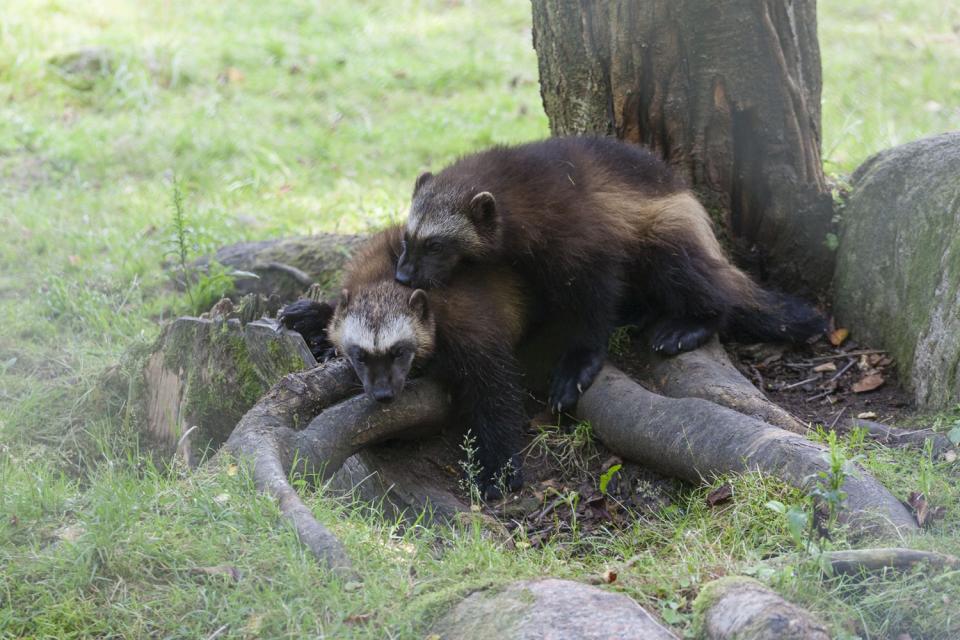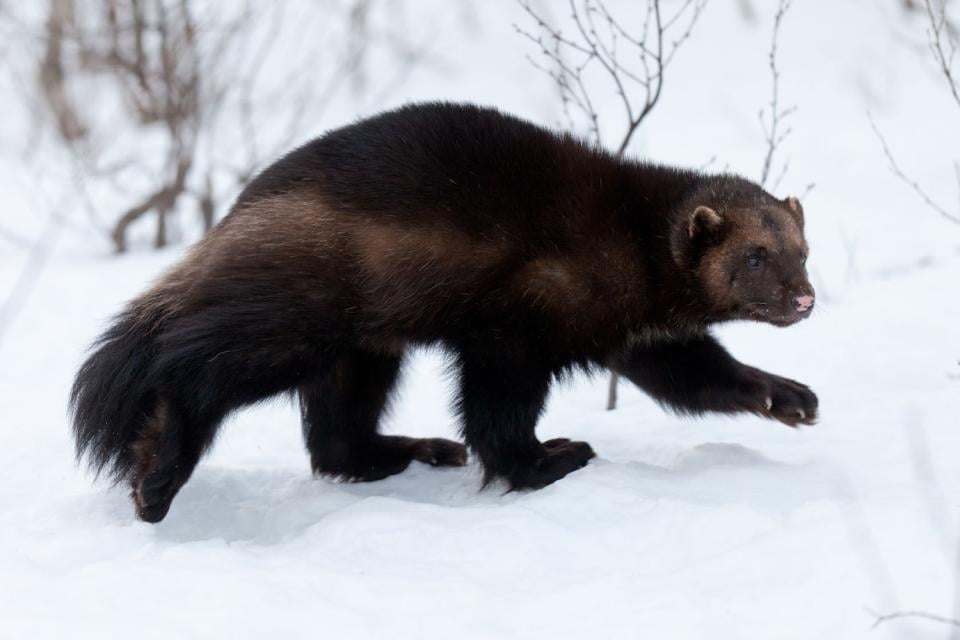
Wolverine Wolverine animal, Animals wild, North american animals
The Wolverine is a powerful animal and is the largest member of the weasel family (Mustelidae). It resembles a small bear with a bushy tail, short legs, and large paws with semi-retractable claws. Wolverines are about the same size as a medium-sized dog when fully grown, ranging from 65 to 87 centimetres in length.

Mammals Canadian Species Initiative
Wolverine is a solitary, mid-sized carnivore animal of the weasel family. Being the largest member of the clan wolverine in Canada can defend its food aggressively against bears and wolves by using its muscular body, strong jaws, and razor-sharp teeth. It hunts its prey by covering the food with its foul-smelling secretions from the anal gland.

Wolverine Government of Yukon
Photo by Gordon Cooke Calgarians recently learned they had a visit from one of the wild's most elusive and fascinating animals — the wolverine. Nature photographer Gordon Cooke captured photos.

How highways are hurting the wolverine's diversity Canadian
The wolverine is the largest member of the weasel family. The wolverine is often mistaken for a small bear or large hoary marmot. Close in size to a medium dog, males weigh between 12 and 16 kg, while females are usually smaller. They have a rich, chocolate brown coat with blonde stripes down the sides.

Wolverine Natural History on the Net
Description Although the Wolverine Gulo gulo belongs to the weasel family, Mustelidae, it is not as long and lean as typical weasels, but rather short and thick, like a small bear. Its head is broad and round, with small eyes and short rounded ears. Its legs are short and sturdy, with five toes on each foot.

Wolverine Bounds Through Lethbridge Neighbourhood HuffPost Canada
Description Wolverines have a wide variety of nicknames. They are known throughout the contiguous United States as the glutton, woods devil, Indian devil, and ommeethatsees (a Cree Indian word), carcajou, quickhatch, nasty cat, and skunk bear. It is the largest land-living species in the weasel family, or mustelids.

Wolverines Alberta Canada
An undated photo of a wolverine at one of the hair snag stations for a multi-year wolverine research project in Western Canada. The station uses bait to attract wolverines and is designed to take.

Wolverines Alberta Canada
The Facts Although it belongs to the weasel family, the Wolverine resembles a powerful, miniature bear. Its fur is usually dark brown with its head and tail lighter in colour. Two tan stripes run from the neck along the sides meeting at the tail. Its long, curved claws are semi-retractile and used for climbing and digging.

23 Animals You Will Find in Canada Cansumer
Wolverine pelts are highly valued because of their frost resistant properties. Wolverine is the icon of remote wilderness, because of their elusive nature and requirement for large home ranges. Reports. Wolverine (Gulo gulo) harvest in the Yukon (2015-2021) Report summary; Full report; Wolverine Carcass Collection Project: 2013-2014 Annual.

Wolverine GOABC Guide Outfitters Association of British Columbia Canada
Wolverine Skunk bear, Glutton, Carcajou, Quickhatch 13 languages Kingdom Animalia Phylum Chordata Subphylum Vertebrata Class Mammalia Order Carnivora Suborder Caniformia Family Mustelidae Genus Gulo SPECIES Gulo gulo Population size Unknown Life Span 5-17 years Top speed 48 km/h mph Weight 9-25 kg lbs Height 30-45 cm inch Length 65-107

Wolverines AwardWinning Filmmaker Andrew Manske Captures A FirstTime
The wolverine is a rare animal in Canada. They are now absent from the southeast and the prairies, rare in the east, and sparse in western and northern regions. They are known for travelling long distances (up to 112 km in 24 hours). In Alaska adult males have been found to have territories of up to 770 km 2; females, 355 km 2 .

Wolverines in BC Protecting an Elusive Species Earth Rangers
Diet Social behaviour Identifying wolverine tracks Conservation concerns Learn more about species at risk in Banff National Park Date modified : 2022-05-27 Wolverine are a rare mammal that needs undisturbed wilderness. Wolverines are one of the best indicators of a healthy, well-connected ecosystem.

Wolverines Alberta Canada
Natural history wolverine A wolverine (Gulo gulo) in northern Finland. The wolverine resembles a small, squat, broad bear, 65-104 cm (26-41 inches) long, excluding the bushy 13-26-cm (5-10-inch) tail; its shoulder height is 36-45 cm (14-18 inches).

Why won't wolverines cross the road? Canadian Geographic
4643 words 19 minutes Wildlife Study finds half of Canada's vertebrate wildlife species are in decline Habitat loss, pollution, climate change have all contributed to steep declines of some species since 1970 786 words 4 minutes Once roaming across North America, the wolverine is now a rare sight

In Search of the Wolverine (Canadian Geographic) Wildsight
Once widespread across Canada, the range of wolverines has significantly decreased over the past two centuries. If wolverines can thrive in the triangle between Golden, Revelstoke and Mount.

Wolverine Facts Animals of North America WorldAtlas
This species has a fearsome reputation. When threatened, wolverines are not afraid to use their sharp teeth and semi-retractable claws. (Click on the image to enlarge) Rarely are these beasts seen. They are solitary, shy animals with a big home range (50-400 square kilometres for males and 230-1,580 square kilometres for females).